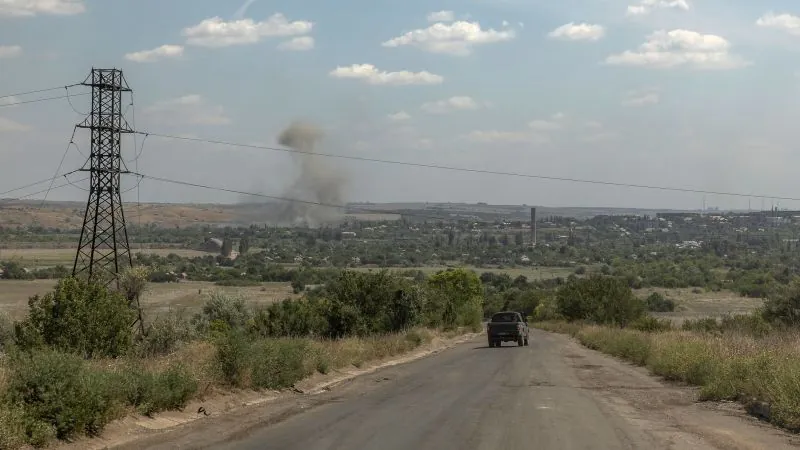
Asteroids: Earth's Close Encounters and the Battle Against Cosmic Collisions
2024-11-24
Author: Ken Lee
Asteroids: Earth's Close Encounters and the Battle Against Cosmic Collisions
In the vast expanse of space, asteroids zip by Earth every day, but fear not! The infamous asteroid known as Apophis, or the 'God of Destruction,' is projected to have only a 1 in 2 billion chance of colliding with our planet in 2029, according to estimates from Space.com. While the prospect of such a cosmic crash might sound alarming, there's little reason for concern—at least for now.
NASA is on high alert as it tracks an ongoing surge in near-Earth asteroid (NEA) discoveries. With the help of advanced telescopes, the agency has identified over 36,000 NEAs to date, a number that is likely to rise as technology continues to improve. In fact, NASA’s survey telescopes discover over 3,000 new NEAs annually.
This year alone, we have witnessed several dramatic passes by sizable asteroids. Notable encounters include:
Recent Asteroid Encounters
- January 27: Asteroid 2024 BJ – approximately 121 feet wide, passing at a distance of 220,000 miles.
- June 27: Asteroid 2011 UL21 – between 1.1 and 2.4 miles across, trailed by Earth at 4.1 million miles.
- June 29: Asteroid 2024 MK – around 500 feet wide and passing within 184,000 miles.
- September 15: Asteroid 2024 ON – measured at 720 feet in diameter, this massive rock passed by at a distance of 620,000 miles.
Even though these phenomena are captivating, and the asteroids sometimes travel millions of miles away from Earth, scientists continue to monitor their trajectories meticulously. NASA estimates that larger asteroids, those measuring over 330 feet in diameter, strike our planet approximately every 10,000 years. Fortunately, no significant threats loom on the horizon at this time.
Where Do Asteroids Come From?
As we delve deeper into the science of asteroids, it’s crucial to understand where these cosmic objects originate. Most asteroids inhabit the main asteroid belt, a sprawling region located between the orbits of Mars and Jupiter. This belt is home to billions of asteroids, offering astronomers endless opportunities to study their formation and behavior.
The Size of Asteroids
Size, too, varies tremendously among asteroids. Some are as small as 30 feet in diameter, while others, like Vesta—the largest known asteroid—stretch an impressive 330 miles across, roughly equivalent to the width of Arizona.
NASA's Preparedness for Asteroid Threats
So, how prepared is NASA for potential asteroid threats? Recent years have seen significant advancements in planetary defense strategies. A hallmark of these efforts was demonstrated in September 2022 when NASA successfully crashed the DART spacecraft into the asteroid Dimorphos at a staggering 14,000 mph. This mission, while not posing any threat to Earth, showcased a revolutionary technique for diverting an asteroid's path in the event of an incoming collision.
Additionally, NASA has engaged in numerous international exercises to bolster preparedness against these cosmic threats, involving around 100 representatives from various governments discussing hypothetical asteroid trajectories.
To further enhance our defense capability, the agency is developing the NEO Surveyor telescope, aiming to detect 90% of asteroids and comets within 30 million miles of Earth's orbit. These efforts symbolize a proactive approach to safeguarding humanity from catastrophic extraterrestrial encounters.
Stay tuned for more updates as scientists continue to unveil the mysteries of asteroids while striving to protect our planet from potential cosmic catastrophes!


 Brasil (PT)
Brasil (PT)
 Canada (EN)
Canada (EN)
 Chile (ES)
Chile (ES)
 España (ES)
España (ES)
 France (FR)
France (FR)
 Hong Kong (EN)
Hong Kong (EN)
 Italia (IT)
Italia (IT)
 日本 (JA)
日本 (JA)
 Magyarország (HU)
Magyarország (HU)
 Norge (NO)
Norge (NO)
 Polska (PL)
Polska (PL)
 Schweiz (DE)
Schweiz (DE)
 Singapore (EN)
Singapore (EN)
 Sverige (SV)
Sverige (SV)
 Suomi (FI)
Suomi (FI)
 Türkiye (TR)
Türkiye (TR)